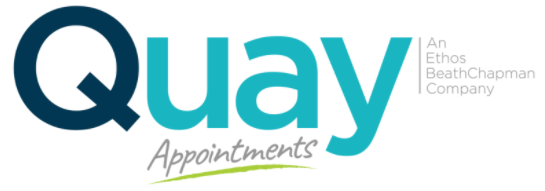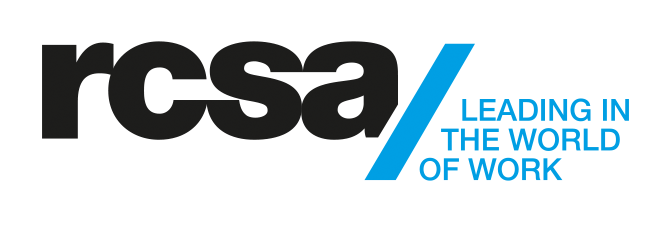Emotional Quotient (EQ) in Leadership Development
The other day, I had come across this fantastic article regarding how emotional intelligence plays a big factor on leadership within businesses. Here is the article and the source
From http://www.dtssydney.com/blog/emotional_quotient_%28eq%29_in_leadership_development
Emotional Quotient (EQ) in Leadership Development
25thOct
Becoming more emotionally intelligent is the implied goal of virtually all leadership training.
Once introduced to emotional intelligence and the impact that emotions have on team performance, productivity, innovation, customer loyalty, employee engagement and retention, leaders will never look at their jobs in quite the same way.
Although emotions and feelings may seem trivial from a business point of view, they have real consequences for getting work done and improving the company’s bottom line. Leaders’ moods have an enormous impact on the performance of those they lead, and since people pay close attention to leaders, even subtle expressions of emotions can have a great impact.
Leaders who exude upbeat moods boost cooperation, fairness, business performance and attract better talent. Negative moods foster conflict, disengagement and higher staff turnover — after all, who wants to work for a negative boss?
Creating organisations that are emotionally intelligent is ultimately the leaders’ responsibility. More than anyone else, it is the leadership team who has the power to establish cultural norms, and the ability to maximise collaboration to ensure that their teams benefit from the best talents of each of its members.
If you want to make an organisation more emotionally intelligent, you must start with the leaders.
How to Introduce EQ to Leaders There is no single best way to coach, train or facilitate a program on emotional intelligence, so what follows is simply a scripted example to help illustrate one way that EQ might be introduced.
Facilitator: “Welcome to [Leadership 101]. Today’s training is about leadership and what separates the average leader from the great one.
What are some of the core qualities that great leaders share? You might like to think about famous political leaders, sports leaders, or business people you’ve worked with in the past whom you think exemplified the qualities of great leadership.
What are those qualities? Charisma? Passion? Integrity? Vision? Intelligence? [Have them come up with a list of qualities]
If we were to make a list of all the qualities of leadership, you might already know that we can separate them into 2 categories: Hard Skills and Soft Skills. The hard stuff is pretty easy to measure: it’s things like your intelligence, knowledge, education and expertise — it’s easy to list on a resume. Then, on the other side, there’s the ‘soft’ stuff, which is harder to quantify. That’s because it’s to do with your personality and character, and includes things like integrity, enthusiasm, the ability the communicate, the ability to build trust, and the ability to influence how other people feel.
How does everyone in this room feel about these two categories? Is there a sense about which is more important: The Hard stuff? … or the Soft stuff? [Group discussion]
So we’ve got some differences in what each person believes is important, which is good. I’ll share with you some of the major research findings on leadership over the past 15 years. What it shows is that the hard stuff, IQ for example, is only sufficient to some extent. That is, it can make you a leader, but not an excellent one. A good IQ is necessary in most leadership positions as the price of entry to the game — it can get you hired, but it doesn’t separate the average from the excellent. In fact, the higher you get up an organisation, the more important the soft stuff becomes.
I think just about everyone in this room knows a story about a highly intelligent, highly skilled executive who was promoted into a leadership position only to fail at the job because they lacked the ability to work well with others.
It was in the mid-1990s that Daniel Goleman released the book ‘Emotional Intelligence’, which provided a completely new language for describing soft skills, and completely flipped our understanding of performance in the workplace.
Goleman and dozens of other researchers have since gone on to investigate hundreds of corporations with both successful and unsuccessful executives, and have found that the single greatest variable in leadership performance comes down to emotional intelligence. In fact, here are a few of the major findings as they relate to leadership:
In competency research of over 200 companies, over four-fifths (80%) of the difference in top leadership positions is due to emotional competence, and only one-fifth (20%) is due to technical skill and cognitive ability. – Goleman
The ability to understand emotions was found as the most consistent predictor of leadership emergence. – Cote, in The Leadership Quarterly
Research by the Center for Creative Leadership has found that the primary causes of derailment in executives involve deficits in emotional competence.
The research has really shown conclusively that emotional intelligence is at the center of leadership. This training will include the role that emotions play in decision-making, the benefits of building emotionally intelligent teams, your own emotional intelligence as measured by the TTI EQ Profile, and how simple adjustments that you can make in your interactions with people on a daily basis can lead to significant increases in productivity and performance; and also a host of other benefits for the organisation as well as you personally.”
—————————————————————————————
Following this introduction, some of the areas you may wish to cover include: the chemistry of emotions and the structure of the brain, the major contributors to the field of emotional intelligence, the difference between EQ and IQ, and major research findings on EQ as they relate to leadership and business performance.
The choice of topics will ultimately depend on the learning objectives and the amount of time available.
In our experience, business leaders are usually less interested in a university-style course that covers the full history and background of EI, and more interested in how to use the tool from a practical workplace perspective.
With this in mind, participants should begin the next phase of the training with an overview of the 5 key emotional intelligence competencies and relevant sub factors. These core competencies help to provide a framework for understanding and assessing the different factors that lead to superior performance not only in leadership, but in every role within the company.
It’s worthwhile to have all the leaders participate in activities and discussions that highlight each of the core competencies by illustrating what a high score could potentially look like, versus a low score. For fun, you might wish you use these famous characters.
At this point, it is a good idea to present the leaders with their EQ profiles (or some specific parts of them) so that they can relate the principles to their own situation.
For those with low scores in any domain, it’s important to communicate that it’s not uncommon and that very few people score high in all 5 domains. What’s more, emotional intelligence is a skill — not an innate talent. Like any other skill, people can get better at it with training and practice.
Once the leaders have a grounded understanding of the emotional intelligence research, core competencies, and a peak at their profiles, you can then move on to what each leader can do to improve and foster emotional intelligence individually and in their teams.
Key Benefits Summary of EQ Profiling and Training for Leaders/Managers and Their Teams:
Identify Links to Business Performance: Understand how the key domains of emotional intelligence have direct links to productivity, retention, team performance, innovation, customer satisfaction and profitability.
Improve Individual Performance: With an emotional intelligence development plan, leaders will learn how to improve their own performance (as well as that of their team members) by identifying and targeting the skills that have the most significant impact on performance within their role.
Shared Language: The leader and team members have a comprehensive framework for discussing the key competencies/skills that are vital to success in their organisation, which were previously difficult to articulate.
Heightened Awareness: Training in EQ helps leaders and teams become more aware of the best ways to communicate and interact with each other, and what steps the leader should to take in order to find the right ‘equilibrium’ with each team member.
Blind Spots: An accurate EQ profile helps reveal potential weaknesses that the individual was not aware of, and further training can help reveal the common blindspots that have been studied throughout the careers of highly successful executives.
Faster Learning Cycle: When a work environment fosters emotional intelligence, leaders are able to be more open to receiving candid feedback and new perspectives so that they can become better managers/leaders.
Better at Critiquing Others: Leaders with well developed EQ are able to give negative feedback (about a person or their work) in a way that the individual does not take offense and actually seeks to improve their performance. Leaders are therefore better positioned to offer useful feedback and identify people’s needs for further growth.
Better at Building Trust: Understand the sort of behaviours that build trust, and the ones that will most quickly erode it, which includes the impact that seemingly subtle moods and emotions can have on others.
Reduce Conflict/Misunderstandings: Emotionally intelligent teams are more aware and sensitive to each others needs and wants, and can prevent problems before they arise within the group.
Better Resilience: Leaders and teams that are emotionally in-tune are better able to deal with disappointments, challenges and obstacles by being supportive and encouraging of each other during tense or stressful situations that might otherwise diminish their performance.
More Energised and Engaged Team: Since a person’s direct manager has the most direct impact on their productivity, health and well being, team members that work for emotionally intelligent leaders are far more willing to pursue goals beyond what’s required or expected of them.
Team is Better with Customers/Selling: Emotionally intelligent teams are alert and responsive to emotional clues given by customers, which will help them show sensitivity and understand others’ perspectives. They will therefore be better equipped to build rapport and trust, which is integral to any service-based organisation.
Coach with Impartial Feedback: Team members will more readily accept negative feedback from a computerised assessment than they would if they were to hear the same feedback from their manager or another individual, making the EQ profile an invaluable coaching tool.











